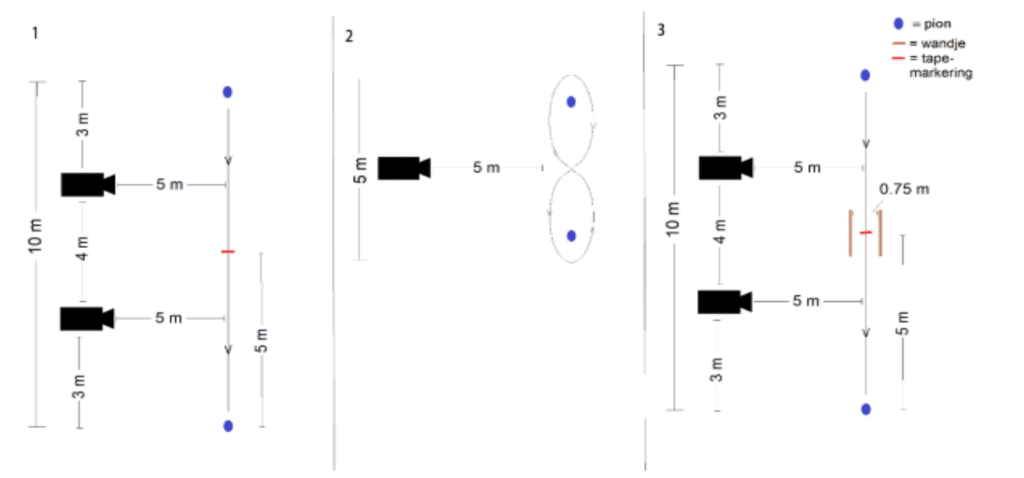During the development process of the Rollz Motion Rhythm, it was researched which cue would be most beneficial for Parkinson’s patients. The purpose of this study was to determine whether the functions of the Rollz Motion Rhythm could contribute to an improved user experience and walking pattern for people with Parkinson’s.
This was achieved by testing several participants on three different setups: a straight 10m walk, walking an 8-figure of 5m, and a 10m walk with a narrowing. Each participant performed the separate settings several times with a different combination of cues. After each setup, an interview was conducted to investigate the participants’ experiences.

Overview measurement set-ups
Results
Based on this research it was concluded that the laser, vibration, and random metronome pattern all contributed to an improved user experience. Scores for the vibration and random metronome pattern were higher than for the audio cue with a specific pitch, as indicated by the questions asked and the grades given to the cues. The placement of the laser on the ground could be improved to enhance the user experience, as suggested by the participants. Specifically, the laser should be projected more forward so that the person doesn’t have to look down as much. Some participants suggested placing the laser in front of the rollator, while others felt that a projection of 20 cm forward from the current spot would be sufficient. To further optimize the rollator, the height of the tones could be adjusted so that people with poor hearing can also hear them well.
The laser was experienced as pleasant and helpful for navigating turns. The random metronome pattern contributed the most to an improved gait pattern, with participants taking smaller steps and longer strides while walking with this cue.
Reference:
- User study in collaboration with the research group Assistive Technology for Mobility and Sports and Expert Centre Human Movement Technology from The Hague University of Applied Sciences (2020-2021).